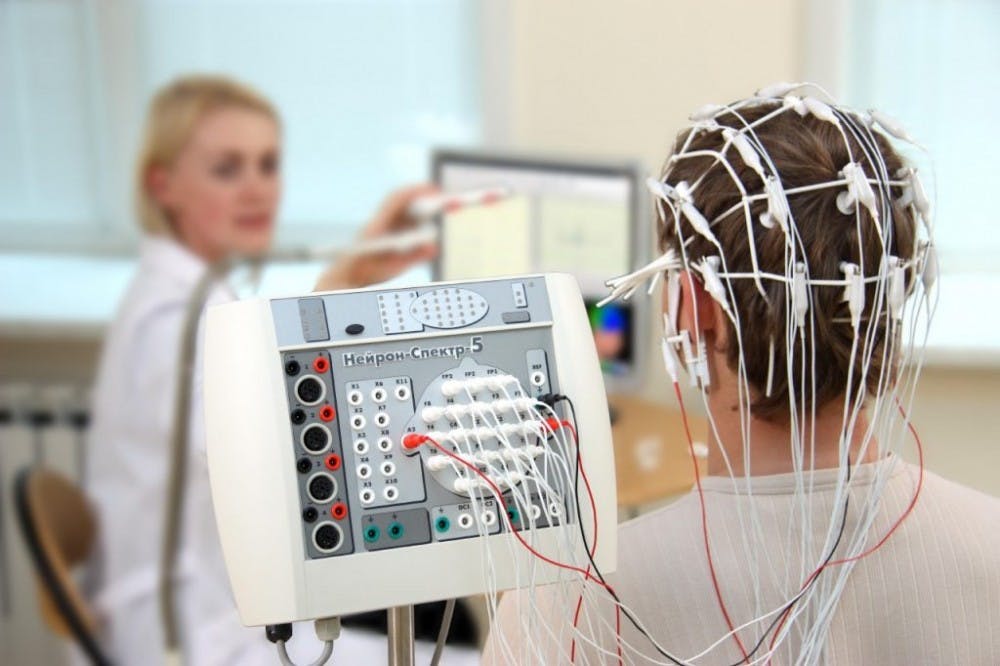Recently a team of researchers from Binghamton University have discovered that humans have unique “brainprints,” which can be measured by using an electroencephalogram (EEG) to visualize the unique brain activity that occurs when different individuals are exposed to the same images. The researchers believe that their discovery could replace current security and identification methods such as fingerprint identification, retinal scans and DNA fingerprinting.
Fingerprint identification is one of the most popular methods for human recognition. It is also one of the earliest forms of identification. It has been in use since the late 19th century when Sir Francis Galton defined some of the characteristics through which fingerprints can be identified. With the rapid growth of computing technology, the process is now automated and has become very popular due to its ease, established use and vast database.
Retinal scans were developed as a biometric technique in the late 1970s. These scans use the patterns of retinal blood vessels to determine a person’s identity. The human retina is a thin layer of neural tissue that lines the back of the eye. Each person’s retina is unique and the pattern of blood vessels is not genetically determined.
DNA fingerprinting was developed in the 1980s. This method extracts DNA from a sample of human cells, then isolates and identifies variable elements within the base pair sequence of the sample. Automated techniques have greatly increased the ease and speed of the technique, and a database of samples is rapidly growing.
In the past few years, researchers studying new methods of security have suggested using EEGs for individual authentication and replacing all previous methods of identification with unique patterns of electrical activity in the brain. One major obstacle to putting this method into practice is the lack of a practical, cost effective method of collecting this information. However, brain biometrics is an appealing technique because this data can be deleted and cannot be stolen the way a fingerprint or retina scan can.
Typically the collection of EEG information uses a complicated array of electrodes, which is time-consuming to apply and expensive to use. New consumer grade units have been developed that consist of a single dry contact sensor resting on the subject’s forehead. It provides an EEG signal from the left frontal lobe of the brain. These units communicate wirelessly to a computer and cost about $100.
The scientists at Binghamton University recently evaluated the brain activity of people who looked at a series of images chosen to stimulate unique personal responses.
When the results were evaluated by comparing the individual’s brain activity to the corresponding images, research found that the participants reacted differently to each image. Each person’s brainprint could be identified with 100 percent accuracy when collected and analyzed by a computer. Their results were published in IEEE Transactions on Information Forensics and Security in 2016.
Originally the accuracy of identity was only 97 percent. Researchers found this unacceptable because the application of this technology was meant for high-security situations like entering nuclear launch sites or the Pentagon. Adding images to the array of words that were displayed to subjects increased the accuracy to 100 percent.
“When you take hundreds of these images, where each person is going to feel differently about each individual one, then you can be really accurate in identifying which person it was who looked at them just by their brain activity,” Lead Researcher Sarah Laszlo said in a press release.
The signals that the researchers have identified for recognition are from the region of the brain associated with reading and recognizing words. These signals are generated when a person accesses their semantic memories. This is important to the accuracy of the procedure. The collection of the meanings that we associate with words and images differs slightly between individuals and provides a unique and individual brainprint. Semantic memories also do not alter significantly over time, which increases their accuracy.
It may be possible in the future to enter a controlled access room or building by simply wearing a small headset. We could even log on to computers and initialize programs by merely thinking about certain words or images.





